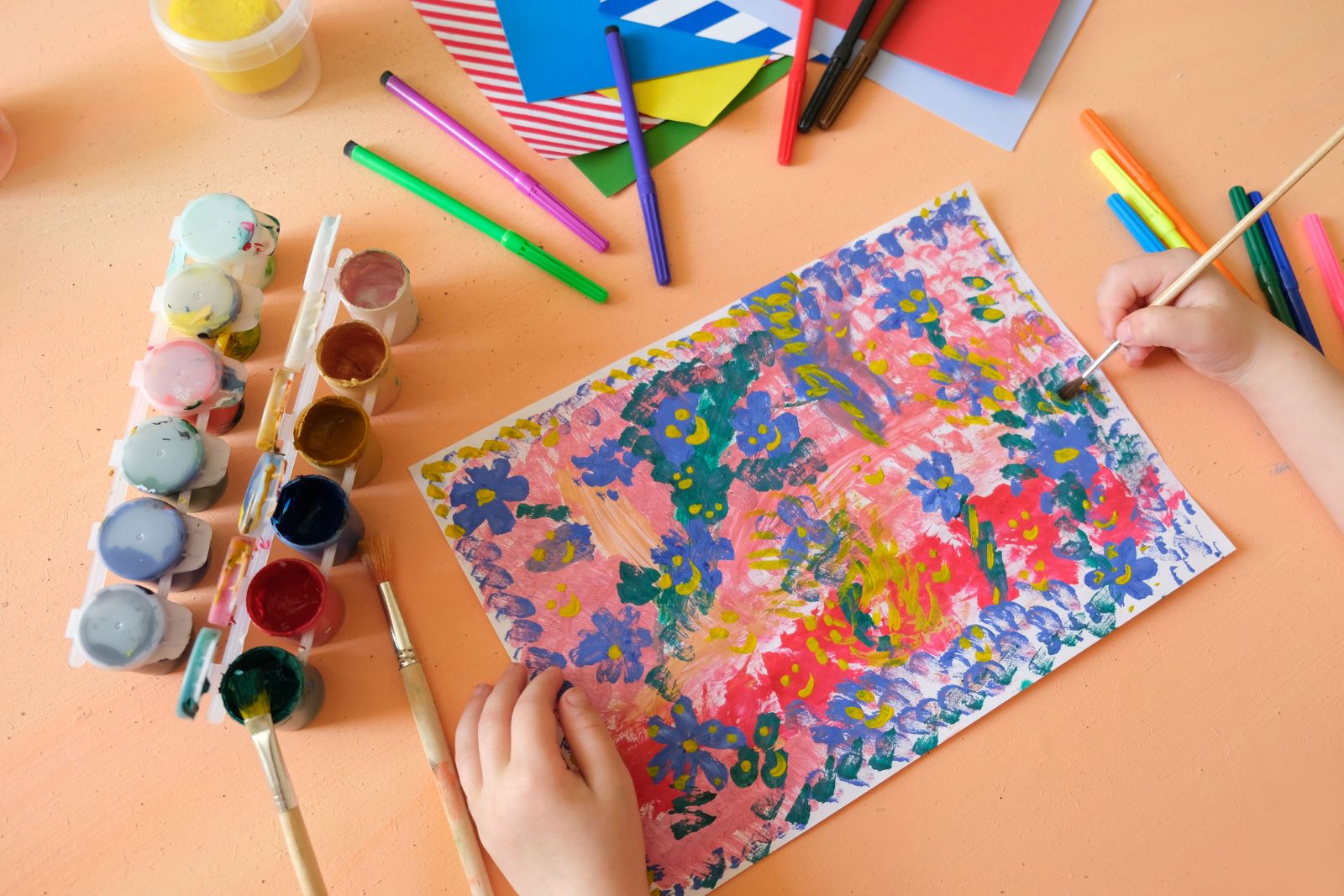<< Back
Painting Offers a Path to Healing

May 02, 2024
Art speaks when words can’t, providing a voice for children when they aren’t sure how they are feeling.
Linda Bradley, expressive arts therapist and manager of the arts program at the Hartford HealthCare Center for Hospice Care in Norwich, explains, “It’s hard for a child to take their emotions and feelings and verbalize them, but through drawing, there are so many emotions that can be expressed.”
The Center’s Expressive Arts programs work to help people process emotions and offer a safe, non-judgmental setting.
Four ways art therapy may support grieving:
- Helps children understand how they’re feeling, even if they’re not quite sure. “Even as adults it’s hard to express exactly how we feel,” says Bradley, adding that children can externalize their mixed-up feelings through drawing, painting, percussion and gardening, reducing stress and providing an outlet for creativity.
- Encourages exploring self-growth and coping. Even if the child doesn’t speak, they convey themselves through their art, processing emotions and working through grief. Art therapists try to talk about death in a positive way and use more upbeat words to help a child understand it is a normal and natural part of life.
- Shows the child they’re not alone in their grief. Art therapy provides a group for children to relate to one another and share their experiences with others who have experienced a loss.
- Creates a safe environment for children to express themselves freely. “This is a safe space for children to come and feel supported. It’s entirely up to them whether they want to share a lot or nothing at all,” says Bradley. “We never force anyone to share, but we will often share our own stories about a loved one who has passed.”
It’s not a sad group, there is a lot of giggling and talking.
The main goal of an art therapy group is to make sure everyone feels heard and respected.
Younger children may have a hard time verbalizing their emotions properly and it can be difficult to see how the grief is affecting them. Bradley often reminds families that children experience the same emotions as adults, but may lack the ability to express them effectively. Children can also grieve for many reasons – the loss of a pet or large changes in their life may distress them more than we think.
Knowing the behavioral changes that might mean a child is struggling is key. Signs can include:
- Anger
- Appetite loss
- Nightmares/insomnia
- Social withdrawal
- Difficulty concentrating
When a child is facing these challenges, art therapy can help children heal and provide comfort. Bradley emphasizes the importance of parental involvement.
“We can use the child’s art to guide conversations and ask the right questions,” she says.
> Want more health news? Text StartHere to 85209 to sign up for text alerts